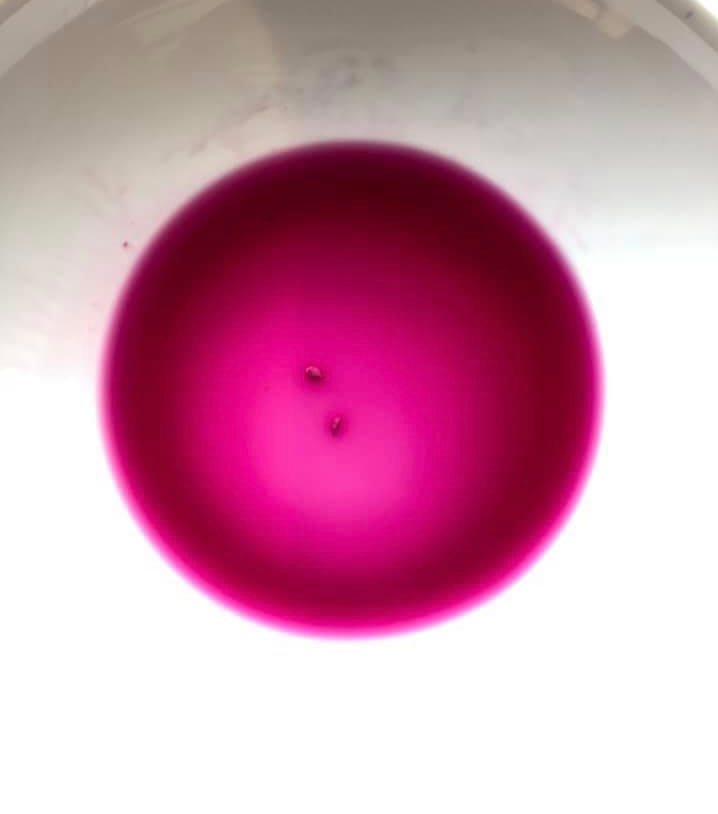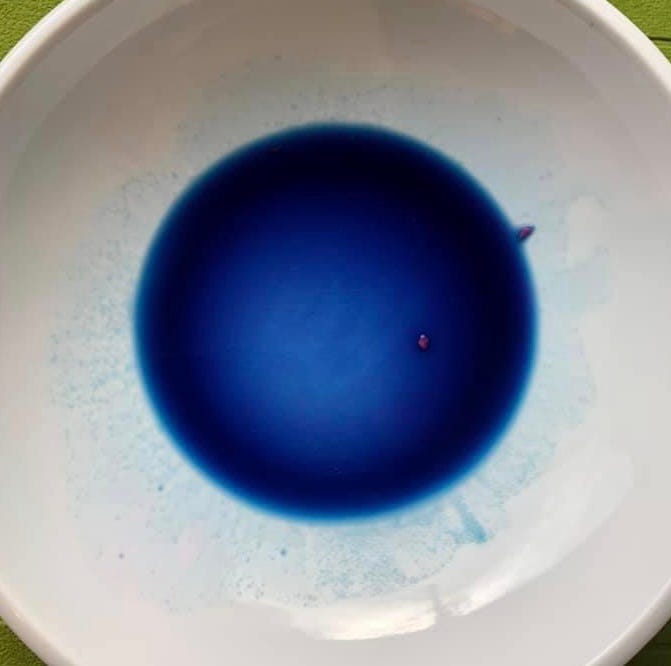About nine years ago, when I was contemplating our looming overseas move, I worried about everything that I would miss from back home—friends and family most of all of course, but also speaking English with neighbors and in shops, enjoying our pretty little hundred-year-old Tudor house with all its creaks and quirks, and inhabiting a familiar world where I understood how life functioned. And, apropos this essay, I also feared that favorite foods and ingredients would be unobtainable. In fact I briefly considered packing a suitcase full of canned chilis in adobo sauce to take with me, until my husband found a local source in Prague, that is.
After a few weeks of culture shock (yes, there were tears), I realized that everything was going to be ok. I made new friends, family came to visit, I learned to speak Czech, our large modern house in Prague was objectively better than our cute but drafty Tudor, and bit by bit I figured life out. Plus the refreshing and delicious Czech beer was literally cheaper than water, and we found a fantastic ice cream spot.

But little did I know that there was an American experience that would be impossible to replicate in Europe: the pleasure of biting into a crisp sour pickle.
You are likely thinking that this cannot possibly be true, but I assure you that it is. Yes there are pickles in Europe, but they are sweet. In my opinion, sweet pickles are a debased version of the Platonic ideal of pickle—the kosher dills found in any American diner. So I learned to make sour pickles my own damn self. (You can find the recipe here.) For a tasty, crunchy, and healthy variation of these pickles, you can make them with red cabbage instead of cucumbers. Kids enjoy helping, so be sure to enlist them in the project!
Red Cabbage Pickles
Slice a small red cabbage in half and remove and discard the outermost leaves and core. (Or save the outermost leaves for a science experiment; see below.) Slice the cabbage crosswise into shreds.
Place the cabbage in a colander and sprinkle liberally with kosher salt. Leave the cabbage to purge its juices for about an hour.
Meanwhile, in a nonreactive saucepan, heat the following ingredients to boiling to make the brine: 1-1/2c white wine vinegar, 1-1/2c water, 2T pickling spice (see NOTE below), and 1–2T salt (to taste). Turn off burner and allow to cool.
Now for the fun part: Really dig your hands into the cabbage and squoosh it. Some liquid might come out, but mostly you’re doing this to partially break down the cellulose in the cabbage. This step is messy, and kids will enjoy seeing their hands turn blood-red.
Layer the cabbage flat in a large Pyrex or other nonreactive dish and pour the brine mixture over. Cover and chill for at least 24 hours.
The cabbage pickles will keep in the fridge for several weeks. They are great on a sandwich, on their own for a snack, or as part of the bitter herbs (maror) at your next Passover seder.
NOTE: Pickling spice is available at US spice shops—for example Penzeys—but I haven’t been able to find it over here, so I make my own. In a jar, combine the following whole spices: cloves, allspice, cardamom pods, red pepper flakes, crumbled bay leaves, fennel seed, and dill seed. Give the jar a shake, and you’re good to go.
Of Cabbages and Kids
You can do a fun science experiment with red cabbage! Red cabbage juice changes color when it comes into contact with acids and bases. So the red cabbage pickle juice, which is highly acidic, will be a gorgeous shade of fuschia (first photo). Your kids can add baking soda to the juice to make it alkaline and watch it turn deep purple and then indigo (second photo).
Another idea: Remember those outermost leaves you removed? Instead of discarding them, try chopping them up and submerging them in various fluids around the house to test whether these liquids are acidic, basic, or neutral. For example, a couple of years ago, I hypothesized that the river near our house might be so clean (you can safely take a drink straight from the river) because the water is highly alkaline from all the lime dissolved in it.1 So we collected some river water and immersed red cabbage in it. I was right! The water turned blue. When we then put some red cabbage into tap water to compare it with the river water, we found that the river water was a much darker blue than the tap water.


Alas, sour pickles are not the only US food staple I can’t find over here, which is why I learned to make vegetable stock my own damn self. Vegetarians adapt many traditional recipes for soup, risotto, and polenta through the simple expedient of substituting vegetable stock for chicken stock; dishes made with vegetable stock have a lovely, light, spring-like flavor that carnivores will enjoy too. In the US, there are a number of high-quality vegetable stocks you can buy—my favorite brands are Pritikin and Pacific Foods—but in Europe the only vegetable stock that seems to be available comes as either an unprepossessing brown pellet or a powdered substance that is a disconcerting shade of chartreuse and reeks of onion powder. Having tried these options a couple of times in a pinch, I can assure you that my quick and easy recipe is a much better choice.
Tasty and Thrifty Vegetable Stock
Designate a large Tupperware or other storage container as your Scrap Vat (TM) and keep it in your fridge for vegetable bits and bobs, for example mushroom stems; potato, tomato, and carrot peels; apple cores (really!); the leafy ends of celery stalks; and the deseeded tops of bell peppers. Contribute to the Scrap Vat during the week before making the stock. (This is the stage of stock-making that has caused my husband to dub me Pioneer Woman Mari.)
On stock-making day, dump all your scraps into an enormous stock pot and add any or all of the following: one or two coarsely chunked potatoes and carrots; a stalk of celery; a chopped red or yellow bell pepper; a tomato, cut in half and pulp squeezed out and discarded; several sprigs of fresh thyme, whole cloves, and bay leaves; some mushrooms; and a peeled and quartered onion. Note: I yield to no one in my love of broccoli and asparagus, but they and in fact all cruciferous vegetables don’t belong in stock, unless you like your soup with a soupçon of sewage.
Pour in at least 1T salt (or more) and several grinds of black pepper. Cover the whole mess with water and fill the pot to a few inches from the top (sorry to be so imprecise; you will eventually develop a sense for how much water to use). Boil, uncovered, for at least an hour and preferably 90 minutes or more.
Doesn’t your house smell amazing?
Let the stock sit out for at least another hour to cool, and then drain. Compost or discard the spent vegetable sludge.
Ladle the stock into jars and store in your freezer to be thawed as needed—including for the fennel risotto recipe I will be posting next week. I usually get at least four big jars of stock from this recipe.
Of all the cuisines in the world, Indian is my very favorite, and we were spoiled when we lived in Prague because we had ready access to spectacular Indian food at the eccentrically-named restaurant K the Two Brothers.2 We went at least once a month during our four years there. Anyway, when we moved to Switzerland, I embarked on a quest to find, if not its equal, then at least a satisfactory substitute. And found bupkis. So, you guessed it, I learned to make several Indian dishes my own damn self. The recipe below is my version of sag paneer, developed after lots of online investigation, home experimentation, and incorporation of techniques I learned in a cooking class called Keep Calm and Curry On. While it is obviously not perfectly authentic, this recipe is simple to make and delicious too, if I do say so myself.
Sag Paneer
Ingredients
about 3T ghee or clarified butter
about 2T vegetable oil
about 1T cumin seeds
1 whole star anise, 2 cardamom pods, a few grinds of black pepper, and a cinnamon stick
1 small onion, finely chopped
salt
1 garlic clove, finely minced with 1/2tsp salt to make a paste
a large knob of ginger (at least 2 inches), peeled and grated on a lemon zester (or very finely chopped)
2 small peppers, seeds and veins removed and finely chopped

a hefty scoop each of powdered coriander, garam masala, and turmeric (when I say hefty, I meant at least 2T—don’t be shy!)
cayenne pepper to taste, but at least 1/4tsp
3 tomatoes, prepared as follows: Halve them, squeeze out and discard the pulp, and run your thumb between the flesh and the peel to remove the peel. Then chop the flesh and discard the stem ends. (Save the peels and stem ends for your vegetable stock if desired.) Or don’t bother peeling. Life is short.
1 pound/500gm bag fresh or frozen chopped spinach (but don’t be a hero; I used to make this dish with fresh spinach, and it is admittedly good that way, but probably not worth the half hour it takes to stem and chop all that spinach by hand, and frozen chopped spinach is great too)
water as necessary to get the proper texture
8–12oz/250–340gms paneer (depending on the package size in your grocery store and/or how much you love cheese), cut into small cubes
1/2c heavy cream
more salt and pepper, to taste
lots of fresh cilantro leaves
Method
In a very large skillet, over medium-high heat, heat the ghee and oil until shimmery and then add the cumin, star anise, black pepper, and cinnamon stick. Slosh around in the pan until they start to release their flavors.
Add in the onion and sprinkle a bit of salt over to help the onion purge its juices. Cook briefly, stirring occasionally, until onion is translucent but not brown.
Add in the garlic, ginger, peppers, and powdered spices. Briefly cook, stirring and adding a bit of water to deglaze if necessary.
Add in the tomatoes and sprinkle a bit of salt over everything. Stir and cook until the tomato-spice mixture begins to form a paste. Again, add water if necessary to keep everything from getting too sticky.
Add in the spinach and heat through, and then add the paneer and cream. Turn the heat down to low and continue to cook slowly, adjusting spices as necessary.
Serve over basmati rice and topped with fresh cilantro.
How about you, readers? What is something you make for yourself that is better than what you can buy? Please share your thoughts (and recipes!) in the comments!
The Tidbit
Speaking of “OK, fine,” here’s a great cartoon:
As the Aare River cascades down from the Alps, it erodes the stone, dissolving lime into the water. Between the Alps and our house, the Aare encounters no big cities, but only smallish towns. Because of the lime and the lack of pollution, the Aare is the cleanest urban river in the world.
Readers, this restaurant is a bit off the beaten path, but if you are ever in Prague, I urge you to go! There is a reason that such celebrities as Jackie Chan, John Malkovich, Katy Perry, and Orlando Bloom have sought it out when they are in Prague. The service, ambience, and—most of all—the food are outstanding!






...are you saying Europeans don't have dill pickles? All of a sudden I feel superior about American cuisine! After sun-warmed tomatoes straight off the vine, dill pickles might be the best part of summer.
I'll have to try using apple cores in stock. It doesn't make it too sweet?
What a fun idea for a post! This has happened a few times where I had to learn to make something my own damn self. One that stands out is: there was a Chinese restaurant in our city that made something called “pork and pickled vegetable.” They abruptly went out of business and no one else seemed to make this dish.
The “pickled vegetable” was something of a mystery ingredient and when I was combing the internet for a recipe I discovered this wasn’t a very common dish at all -- so “pickled vegetable” was a little hard to identify.
Finally I discovered the thing I was looking for was called “Zha Cai” aka “Szechuan Preserved Vegetable” -- if you have a well stocked Asian grocery you can find it or you can even get it from Amazon.
Here’s a link so you can see what it looks like in a can:
https://a.co/d/4lRZorG
It’s not that expensive if you find it in an Asian grocery, but if I had to buy it from Amazon and pay $11 for a can, I’d still say it’s worth every penny.
Also I learned that a dish made with Zha Cai and pork was usually in soup form, not in the stir-fry form I’d grown to love at the restaurant. But eventually I found a recipe that was similar and I learned to make it my own damn self and it’s really pretty good:
1 lb pork loin or country ribs
1 Tbsp soy sauce
1/2 tsp white pepper
1 tsp sesame oil
2 tsp corn starch
12-oz can Zha Cai
3 cloves minced garlic
1 Tbsp shredded or minced ginger
1 1/2 Tbsp Shaohsing wine
1 tsp (additional) soy sauce
1 tsp sugar
3/4 c water
3 green onions cut in thin strips
3 red chilies seeded & cut in thin strips
1. Cut the pork into very thin stir-fry pieces (kind of like “julienne” if it were a vegetable) and place in a medium bowl. We have an Asian grocery that sells pork cut this way so that is a nice time-saver. Toss the pork with the 1 tbsp. soy sauce, 1/2 tsp. white pepper, 1 tsp. sesame oil & 2 tsp. cornstarch. Cover with plastic wrap & refrigerate for 20-30 minutes.
2. Drain and julienne the Zha Cai if needed. I think the one from Amazon linked above is already “shredded” and therefore the right size. Very briefly rinse it & set aside. You can skip the rinsing if you like extra-intense pickled vegetable flavor.
3. Heat 1 tbsp. vegetable oil over medium high heat in a wok. Add garlic and stir about 20-30 seconds. Add marinated pork & cook for several minutes or until cooked through. I tend to overcook all meats because I’m weird about meat. Add ginger shreds & the wine & toss well.
4. Add the Zha Cai, the 1 tsp. soy sauce, 1 tsp. sugar, and 3/4 water. Cook for 1-2 minutes or until liquid is slightly reduced/thickened. Add green onions & red chilies, stir briefly (don’t cook the heck out of these) and turn off heat.
5. Serve with steamed rice.